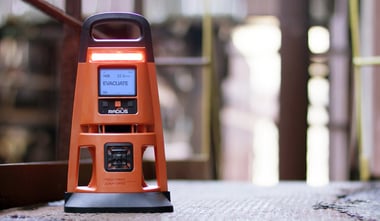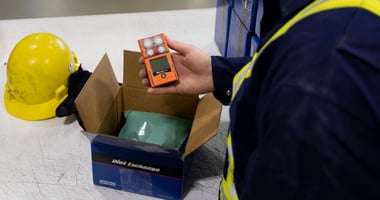Area monitors are a great tool that you can use to see whether gas hazards on your site could threaten workers – without sending them into harm’s way with a personal gas monitor. Instead, using area monitors allows you to create a safe buffer zone between workers and potential gas hazards. Because of this, they’re commonly used for high risk work like plant shutdowns and confined space entries, as well as everyday applications like perimeter or fence line monitoring.
Area monitors have grown in popularity within the last few years because they protect workers and give you a bird’s eye view into gas hazards across your site. They make it easy to spot and address danger zones. In many cases, area monitors are used in combination with personal gas monitors to create a complete and well-rounded gas detection program.
But what happens when you need to detect gas hazards in a challenging area? You know you need to monitor that location, but something is stopping you. You might not have access to a power source, the area is too remote to send workers out to maintain the monitors, the area is extremely hazardous, the area only needs to be monitored until the project is done, or—if you’re like a lot of people—some combination of all of these challenges.
When considering an area monitor to detect gas hazards in remote, dangerous, or otherwise challenging locations, ask yourself these three questions:
1. Can the area monitor run without electrical power or without swapping batteries?
Remote locations rarely offer easy access to electrical power. And if the location is far away, you won’t want to send workers out every few hours or days to charge batteries—that’s a waste of valuable time for all involved. Your ideal area monitoring solution should have an unlimited runtime and not require electricity.
2. Is the area monitor certified to work in hazardous locations?
When it comes to hazardous locations, not all area monitors are equal. If you have flammable or ignitable gases or liquids on site, you’ll need an area monitor that’s certified to be safe for these areas. It’s important to understand that area monitors and their power supplies can have different hazard certifications. This means that if you’ll be using an alternative power source, like solar panels, you need to confirm hazard certifications for both the area monitor and the power source. If the two have different certifications, the entire area monitoring solution can only be used in the lower of the certification areas Most companies can safely rely on Class 1 Div 2 certifications.
3. How easily can I move the area monitor to different locations?
Unlike fixed-point gas detection systems, area monitors are often moved to different locations during short-term needs like shutdowns, turnarounds, and emergency scenarios. However, some power supplies and accessories for area monitors can make them harder to move. You won’t want to move an area monitoring solution that requires a forklift or a whole team to relocate it. If you can’t move it easily, you probably won’t use it. Look for an area monitoring solution that that one worker can move.
You can resolve some of these challenges with a solar powered area monitor. Although there are a handful of solar powered area monitors or conversion accessories on the market today, only one gas detection provider (hint: it’s Industrial Scientific) offers a solar powered area monitor that resolves all three critical area monitoring challenges: runtime, hazard certifications, and portability.
Industrial Scientific’s Solar Power Supply for Radius® BZ1 Area Monitors and RGX® Gateways gives you the power and flexibility to monitor gas hazards in any outdoor location—no matter how remote or hazardous.
Solar panels provide unlimited runtime for up to two Radius BZ1 Area Monitors, RGX Gateways, or a combination of the two, while a CSA Class 1 Div 2 certification ensures safety in hazardous locations. A portable, modular design allows a single worker to transport and assemble the Solar Power Supply.
By addressing these common challenges, the Solar Power Supply makes it easy and efficient to monitor gas hazards in any outdoor location. This allows you to minimize the cost of labor and the risk of charging and rotating equipment in hazardous or remote locations.
Want to unleash your area monitors? Talk to an expert to learn whether the Solar Power Supply is right for you.



